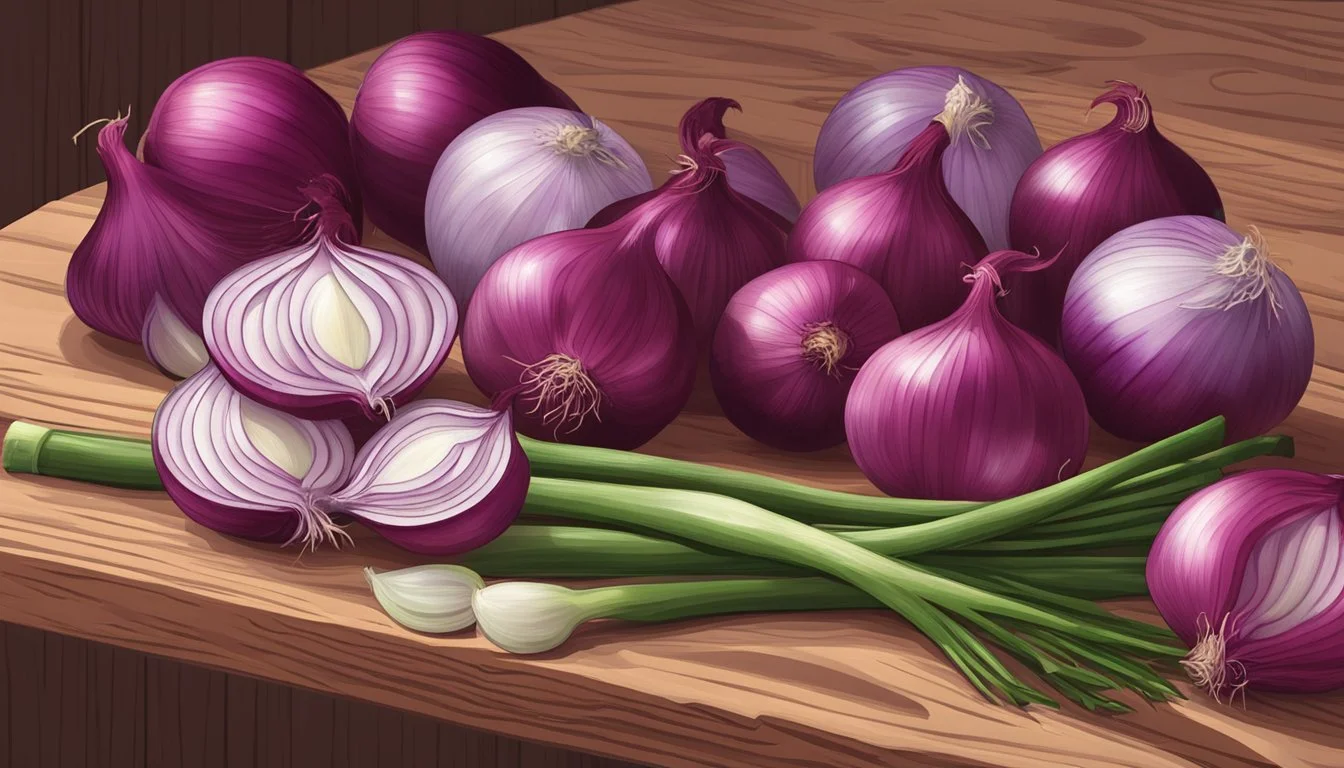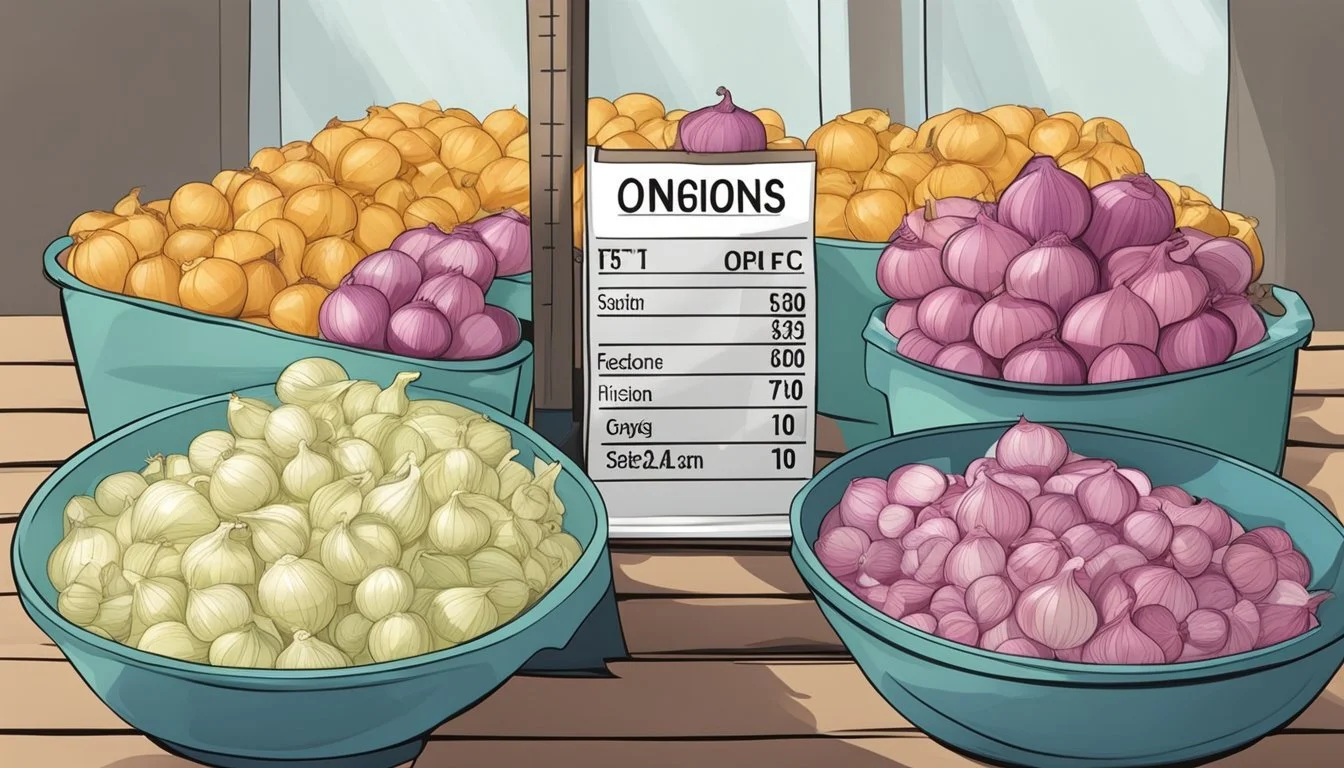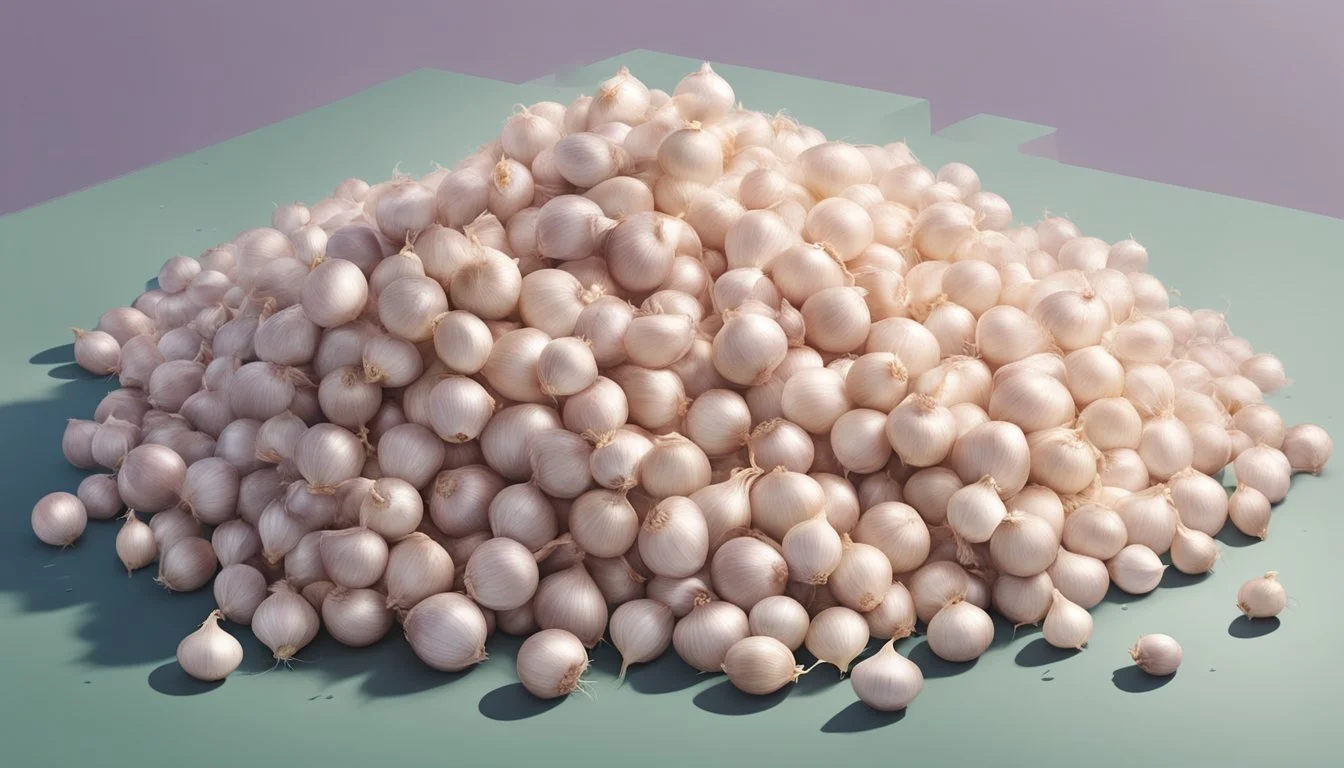Frozen vs Fresh Onions: Reddit Users Debate Convenience and Flavor
Frozen onions and fresh onions each have their place in the kitchen. Many home cooks debate the merits of using frozen versus fresh, particularly when time and convenience are factors. Frozen onions can be a suitable substitute for fresh in certain dishes, though they may lack some of the crisp texture and sharp flavor of their fresh counterparts.
The convenience of pre-chopped frozen onions appeals to busy cooks or those who want to minimize prep time. Frozen onions are typically processed and frozen shortly after harvesting, which can help preserve nutrients. However, they tend to release more moisture when cooked and may have a softer texture compared to fresh onions.
Fresh onions offer a more robust flavor profile and maintain their crunch better in raw applications or quick-cooking methods. They also provide greater versatility in terms of size and shape for different recipes. The choice between frozen and fresh often comes down to the specific dish being prepared and personal preferences in taste and texture.
The Basics of Frozen vs. Fresh Onions
Frozen and fresh onions offer distinct advantages in the kitchen. Each type has unique characteristics that affect flavor, texture, and convenience.
Understanding Frozen Onions
Frozen onions provide a convenient option for cooks. They come pre-peeled and often pre-chopped, saving time and effort. Freezing preserves onions at their peak freshness, locking in nutrients and flavor.
Texture can be slightly softer than fresh, but this is often unnoticeable in cooked dishes. Frozen onions work well in soups, stews, and casseroles. They're particularly useful for recipes requiring pearl onions, as these can be tedious to peel fresh.
Many chefs find frozen pearl onions comparable to fresh in taste. They're flash-frozen soon after harvest, maintaining quality. Frozen onions also allow for easy portion control and reduce food waste.
The Nature of Fresh Onions
Fresh onions offer a crisp texture and pungent flavor. They provide versatility in the kitchen, suitable for both raw and cooked applications. Fresh onions have papery skins that need removal before use.
Cutting fresh onions releases compounds that can cause tearing. To reduce this, chill onions before cutting or use cold water. Fresh onions store well at room temperature in a dry, dark place.
They're ideal for dishes where texture is crucial, like salads or garnishes. Fresh onions allow for precise cutting and shaping. They're readily available in most grocery stores and come in various types, each with unique flavors and uses.
Culinary Considerations
Frozen and fresh onions offer distinct culinary experiences, impacting both flavor and texture in various dishes. Their differences become apparent in taste tests and cooking applications.
Flavor Profiles and Taste Test
Frozen onions tend to have a milder flavor compared to their fresh counterparts. In taste tests, fresh onions often deliver a sharper, more pungent taste with noticeable bite. Frozen varieties lose some of their intensity during the freezing process.
For sauces and stir-fries, fresh onions contribute a brighter, more pronounced onion flavor. Frozen onions work well in soups and stews where a subtler onion taste is desired.
Some cooks prefer frozen onions for certain meals as they eliminate tear-inducing chopping. However, the trade-off is a less vibrant flavor profile.
Texture and Cooking Behaviors
Fresh onions maintain a crisp texture when raw and develop a pleasing tenderness when cooked. They caramelize beautifully when sautéed, adding depth to dishes.
Frozen onions have a softer texture from the start due to ice crystal formation during freezing. They break down more quickly when cooked, making them suitable for recipes where a smooth consistency is preferred.
In boiling or long-cooking methods, the texture difference becomes less noticeable. For stir-fries or dishes requiring distinct onion pieces, fresh onions hold their shape better.
Frozen onions release more water during cooking, which can affect sauce consistency. Adjustments in cooking time or liquid amounts may be necessary when using frozen onions in recipes.
Uses in Recipes and Meals
Frozen and fresh onions offer versatility in cooking, with each type having unique advantages for different dishes. Their preparation methods and flavor profiles impact how they are incorporated into recipes.
Incorporating Frozen Onions
Frozen onions shine in cooked dishes like soups, stews, and casseroles. They blend seamlessly into slow-cooked meals, imparting flavor without the need for chopping. Frozen pearl onions work well in pot roasts or as a quick side dish when sautéed with butter and herbs.
For stir-fries, add frozen onions directly to the pan. They cook quickly and release moisture, which can be beneficial for creating sauces. In tomato-based recipes, frozen onions integrate easily, contributing to the overall flavor without altering the texture significantly.
Frozen onions are particularly useful in emergency meal preparation. They can be tossed into omelets, frittatas, or scrambled eggs for a quick flavor boost.
Working with Fresh Onions
Fresh onions provide crisp texture and sharp flavor in raw applications. They're ideal for salads, salsas, and sandwiches where crunch is desired. When sliced thinly, fresh onions make excellent toppings for burgers and tacos.
For cooked dishes, fresh onions offer more control over texture. They can be caramelized for a sweet, rich flavor in French onion soup or as a base for sauces and gravies. Fresh onions are essential for traditional mirepoix in soups and stocks.
Roasting whole fresh onions creates a tender, sweet side dish. They can be stuffed with herbs and cheese for an elegant appetizer. In stir-fries, fresh onions provide a satisfying crunch and absorb flavors well.
Nutritional and Health Perspectives
Frozen and fresh onions both offer nutritional benefits. Frozen onions retain most of their nutrients due to flash-freezing shortly after harvest. This process preserves vitamins and minerals effectively.
Fresh onions provide a crisp texture and pungent flavor that some prefer. They contain slightly higher levels of certain antioxidants when consumed raw.
Both forms offer similar health advantages:
Rich in vitamin C
Good source of fiber
Contains flavonoids and sulfur compounds
Frozen onions may have a minor edge in convenience and shelf life. They come pre-chopped, saving preparation time. Fresh onions require proper storage to maintain quality but can last several weeks.
Studies comparing frozen and fresh vegetables generally find minimal nutritional differences. This applies to onions as well as other produce.
For optimal health benefits, incorporating a variety of vegetables - both frozen and fresh - is recommended. This ensures a wide range of nutrients in the diet.
Availability and Convenience
Frozen and fresh onions offer different advantages in terms of availability and convenience. The choice between the two depends on factors like storage space, usage frequency, and personal preferences.
Purchasing and Storing Frozen Onions
Frozen onions are readily available in most grocery stores year-round. They come pre-chopped, saving time on meal preparation. A bag of frozen onions can be stored in the freezer for several months, providing a long-lasting supply.
Frozen onions take up freezer space, which may be limited in some households. However, they eliminate the need for peeling and chopping, reducing food waste and tear-inducing preparation.
Many stores offer bulk options for frozen onions, allowing for cost-effective purchases. This can be particularly useful for those who use onions frequently in cooking.
Availability of Fresh Onions
Fresh onions are typically available year-round in grocery stores, farmers markets, and produce stands. They offer versatility in terms of variety, with options like yellow, red, and white onions readily accessible.
Storing fresh onions properly can extend their shelf life. They should be kept in a cool, dry, and well-ventilated area. Fresh onions don't require freezer space, which can be an advantage for those with limited freezer capacity.
Seasonality can affect the price and quality of fresh onions. Some varieties may be more abundant and affordable during certain times of the year. Fresh onions allow for selection based on size and quality at the time of purchase.
Comparative Cost Analysis
Frozen onions and fresh onions differ in their pricing structures. Fresh onions are typically sold by weight, while frozen onions come in pre-packaged quantities.
Bulk purchases of fresh onions can offer significant savings. Many grocery stores sell large bags at discounted prices per pound.
Frozen onions tend to have a higher upfront cost. However, they eliminate waste from spoilage and unused portions.
Seasonal factors impact fresh onion prices. During peak growing seasons, fresh onions may be cheaper than frozen. Off-season, frozen options can be more economical.
Storage costs should be considered. Fresh onions require dry, cool spaces. Frozen onions occupy valuable freezer space, which may have higher associated energy costs.
Prepared frozen onions save time on peeling and chopping. This convenience factor may justify their higher price for some consumers.
Price comparisons vary by region and store. It's advisable to check local prices and sales to determine the most cost-effective option for individual needs.
Environmental Impact and Sustainability
Frozen and fresh onions each have environmental implications worth considering. The production and transportation of both forms contribute to their carbon footprint.
Fresh onions require more water during cultivation, with estimates ranging from 18-40 tonnes of yield per hectare. However, they generally have lower energy demands for storage and transportation.
Frozen onions involve additional processing steps, including cleaning, cutting, and flash-freezing. This requires more energy upfront but can reduce food waste in the long run.
Transportation plays a significant role in environmental impact. Fresh onions may travel shorter distances to reach consumers, while frozen onions can be shipped farther without spoilage.
Packaging differs between the two options. Fresh onions often use minimal packaging, while frozen onions require plastic bags and boxes for protection during storage and shipping.
Food waste is an important factor to consider. Frozen onions have a longer shelf life, potentially reducing waste at both retail and consumer levels.
The choice between frozen and fresh onions may depend on individual circumstances, including location, season, and intended use. Both options can be part of a sustainable diet when used mindfully.
Consumer Preferences and Trends
Consumers are increasingly torn between fresh and frozen produce options. Convenience plays a major role in this decision, with many opting for frozen vegetables to save time and reduce food waste.
Frozen onions and other vegetables appeal to those with limited fridge space. They provide a long-lasting alternative that doesn't spoil quickly. This aligns with busy lifestyles and the desire to always have ingredients on hand.
Fresh produce still holds strong appeal for its perceived superior taste and texture. Many home cooks prefer using fresh onions and vegetables when flavor is a priority. The ability to inspect and select individual items is also valued.
Cost considerations influence choices. While frozen vegetables are often more expensive per unit, their extended shelf life can lead to less waste overall. Fresh produce prices fluctuate seasonally, affecting purchasing decisions.
Nutritional perceptions impact preferences. Some consumers believe fresh vegetables retain more nutrients, though studies show frozen options can be equally nutritious. This belief continues to drive fresh produce purchases for health-conscious shoppers.
Seasonal availability shapes buying habits. Out-of-season vegetables are more readily accessible in frozen form year-round. This expanded selection appeals to those seeking variety in their meals regardless of the time of year.







